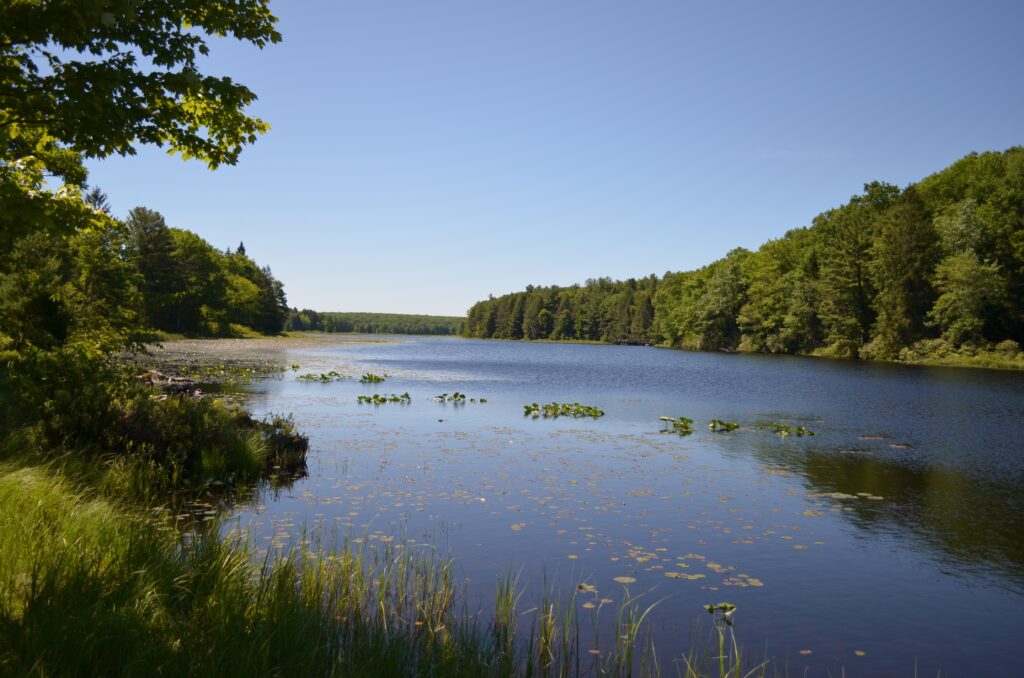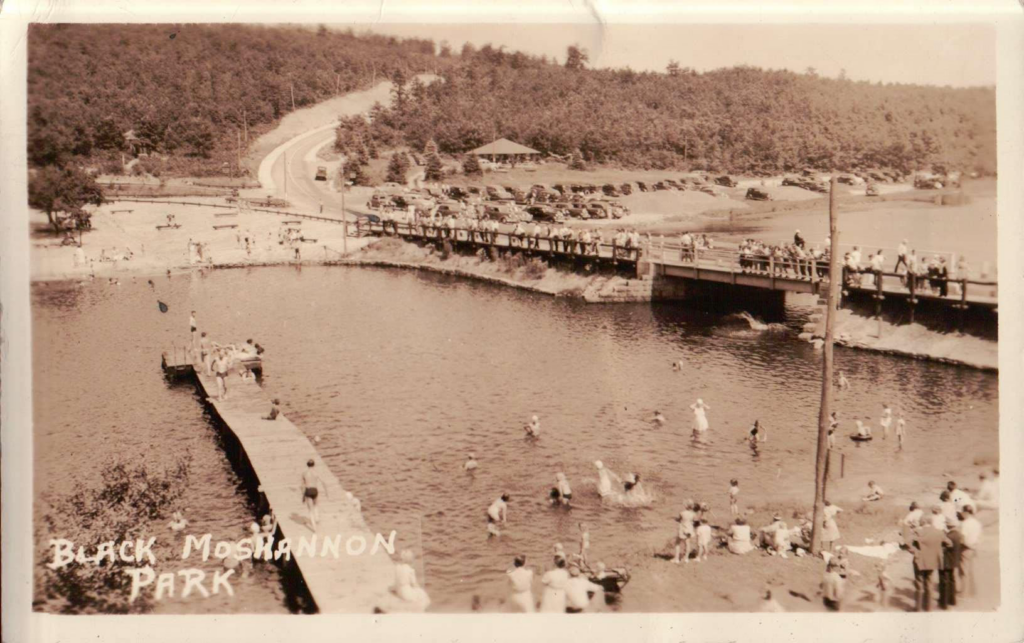Black Moshannon State Park is a 3,394-acre park in Rush Township that conserves a unique natural environment surrounding Black Moshannon Lake.
The park, which sits atop the Allegheny Front at an elevation of 1,900 feet, was established in 1937 after the Civilian Conservation Corps (CCC) built a dam, log cabins, picnic pavilions, and trails. According to tradition, Native Americans called the area Mos’hanna’unk, which means “elk river place.” The “black” in the name comes from the tea-colored waters of the lake, which is fed by the streams that flow through the bogs stretching from its shores.

Black Moshannon’s waters have been used by humans for centuries. Seneca Indians fished and hunted in the area. The Philadelphia-Erie Pike (now Pennsylvania Route 504) opened in the 1820s, and travelers often stopped at the Antes House, a tavern near the park’s present bridge.
Lumber mills later operated nearby, taking advantage of the vast hardwoods. Loggers also constructed a splash dam near the current dam and used it to move logs downstream.
One operation, the steam-powered Star Mill, had twenty saws and a planer. Before the turn of the 20th century, the area had a general store, stables, blacksmith shop, a tavern-hotel, and a schoolhouse. The schoolhouse remains in the park.
When the timber was depleted, the mills closed and the Commonwealth of Pennsylvania began acquiring the deforested land. What became the 190,000-acre Black Moshannon State Forest stretches north and east into Clearfield and Elk counties.
Starting in 1933, the CCC operated ten camps in the forest and built many of the facilities that are used today in the park. That includes the dam, which provides swimming, boating, and fishing on the lake. A primitive ski area operated in the park from the 1960s until 1982. The ski lodge was converted into a cabin and can now be rented by park visitors.
The park has fourteen trails, including the Bog Trail, a wooden boardwalk that stretches into the lake bog, the Star Mill Trail, where evidence of the mill can be seen, and the Allegheny Front Trail, a rugged path that encircles the park. The park is in a “Pennsylvania Important Bird Area,” where 175 species have been identified.

In 1994, the Commonwealth provided additional protection to 1,592 acres of bogs, marshes, swamps, and forests in the park and named it the Black Moshannon Bog Natural Area. The Black Moshannon bog is considered one of the best examples of a bog ecosystem in the Allegheny Plateau region of Pennsylvania. Bogs are freshwater wetlands with sphagnum moss that create the conditions necessary for rare plants, including various species of orchids, to thrive.
In 1987, three historic districts in the park were placed on the National Register of Historic Places in recognition of their CCC-built structures. The structures include picnic pavilions, cabins, and maintenance buildings.
The Friends of Black Moshannon State Park is a volunteer organization that promotes the park through a Summer Festival that takes place annually in July. Many of the festival’s events, which include axe throwing and log rolling, recall the lumbering history of the area.
Ford Risley
Source:
Black Moshannon State Park. www.dcnr.pa.gov/StateParks/FindAPark/BlackMoshannonStatePark (Accessed June 9, 2021).
First Published: June 10, 2021
Last Modified: February 28, 2025
